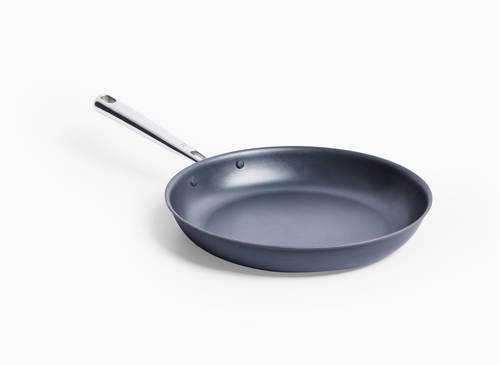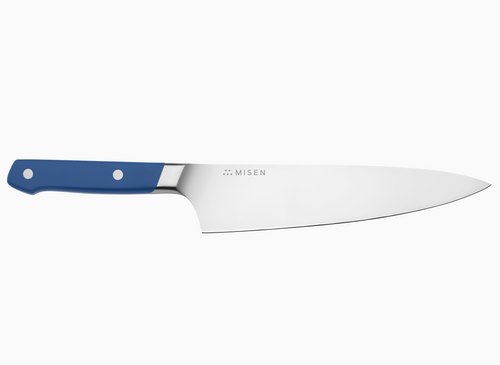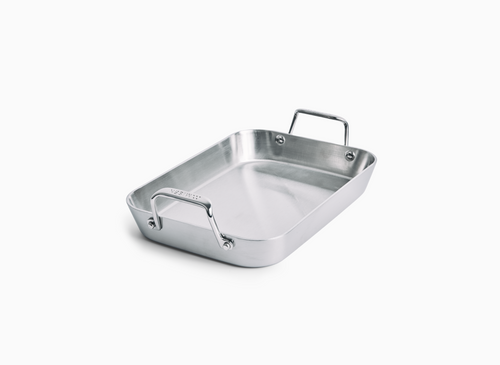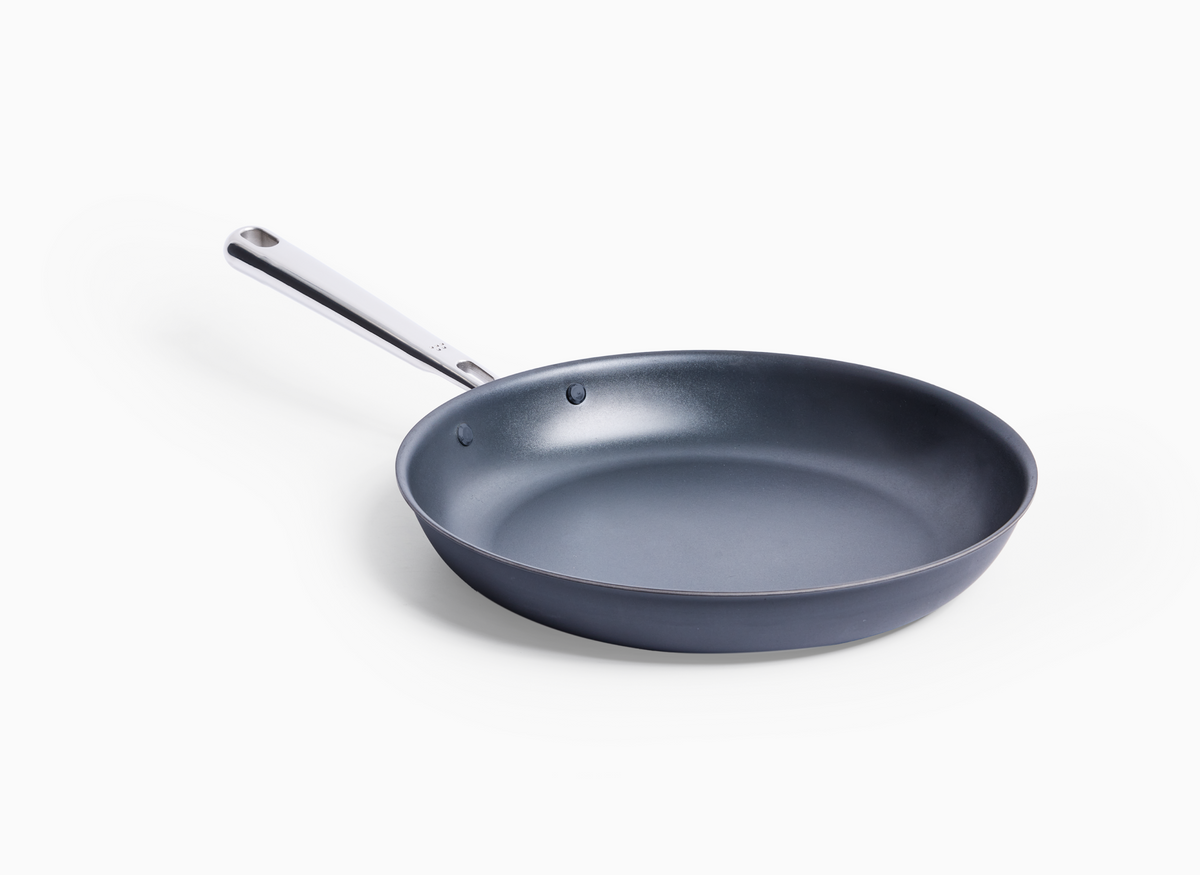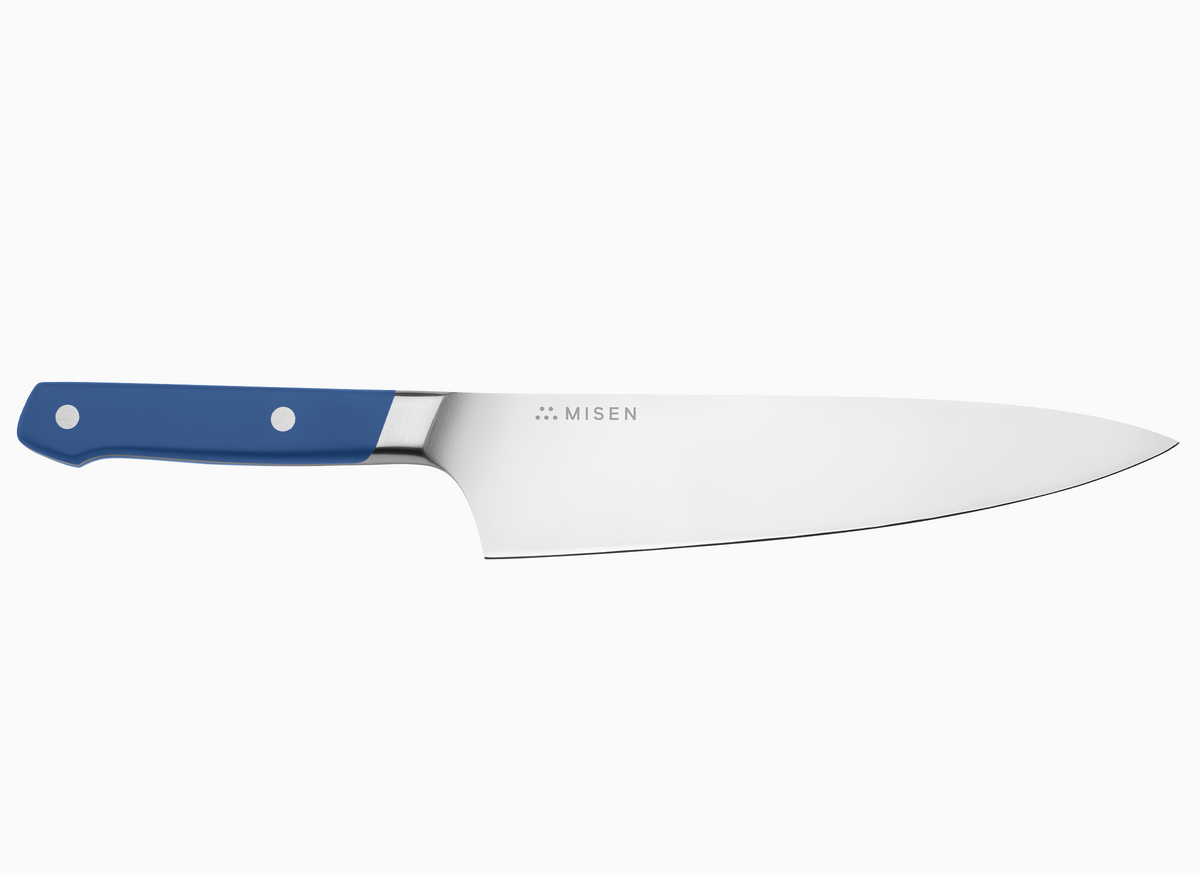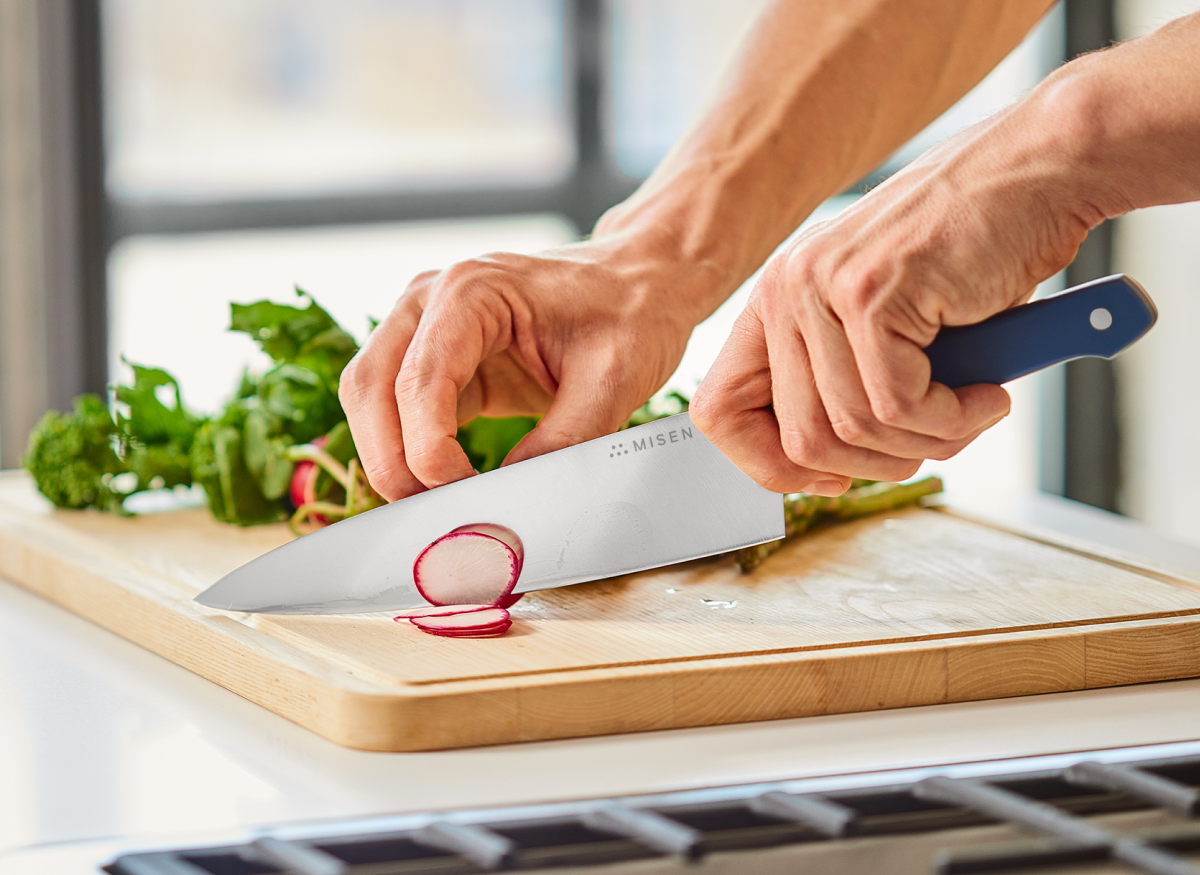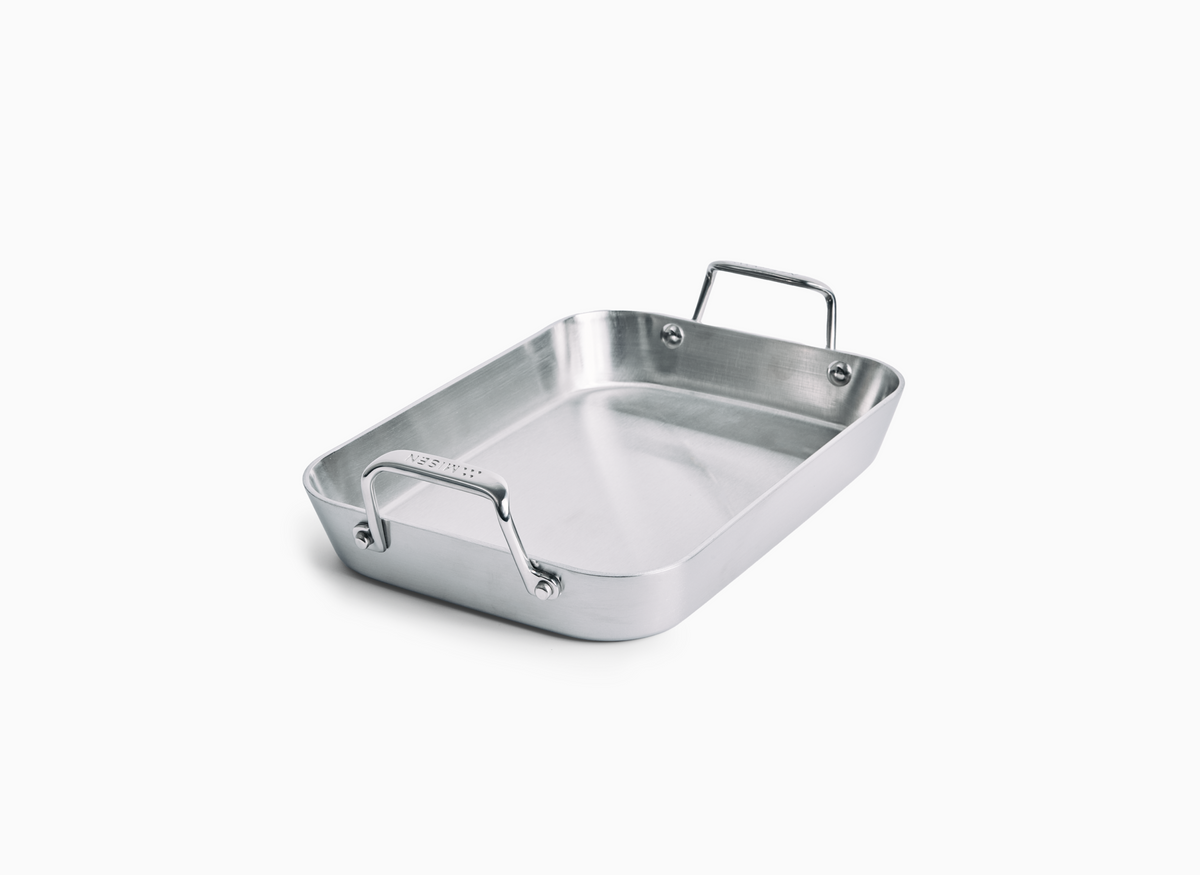How To Cut A Tomato

Table of Contents
Summary
Proper tomato cutting techniques are essential for culinary excellence, kitchen safety, and enhancing the visual appeal and flavor of dishes. Using the right tools, like a sharp serrated knife and sturdy cutting board, along with proper hand positioning and cutting methods, can make all the difference in achieving perfectly cut tomatoes for any recipe.
5 Key Takeaways
- Use a sharp serrated knife for optimal results when cutting tomatoes.
- Maintain a stable cutting board and proper hand positioning for safety.
- Remove stems and blemishes before cutting tomatoes.
- Employ specific cutting techniques for different tomato varieties and desired outcomes.
- Clean and maintain your knives properly to ensure longevity and performance.
Introduction to Cutting Tomatoes

Importance of proper tomato cutting techniques
At Misen, we understand that proper tomato cutting techniques are crucial for both culinary excellence and kitchen safety. Well-cut tomatoes not only elevate the visual appeal of your dishes but also ensure even flavor distribution and optimal texture. By employing the correct techniques, you can maintain the tomato's structural integrity, prevent excessive juice loss, and achieve clean cuts that showcase the fruit's delicate flesh.[1]
Precise cutting also contributes to consistent cooking results, as uniformly cut tomatoes cook evenly and allow for better portion control. This is particularly important when preparing sauces or dishes where the tomatoes' size and shape directly impact the final outcome.[2]
Benefits of well-cut tomatoes in cooking
When you take the time to cut your tomatoes properly, you'll notice a significant difference in your culinary creations. Evenly sliced or diced tomatoes elevate the visual presentation of your dishes, making them more appetizing and professional-looking. Well-cut tomatoes also contribute to better flavor distribution, as their juices and flavors are released more evenly throughout the dish.[3]
Moreover, properly cut tomatoes maximize the use of the entire fruit, including the flavorful seeds and surrounding gel. This not only minimizes food waste but also ensures that you're capturing all the nutritional benefits and flavors that tomatoes have to offer.[4]
Overview of tools needed for cutting tomatoes
Having the right tools is essential for achieving perfect tomato cuts. At Misen, we recommend investing in a high-quality chef's knife or serrated knife, as these are ideal for slicing through tomatoes with ease. Our Misen Essentials Knife Set includes a versatile 8-inch Chef Knife and a 3.5-inch Paring Knife, both crafted from premium Japanese steel for exceptional performance.[5]
In addition to a sharp knife, a sturdy cutting board is crucial for safely and effectively cutting tomatoes. Opt for a cutting board with ample space and a non-slip surface to ensure stability during the cutting process. Other helpful tools include a paring knife for precise tasks, a box grater for quickly shredding tomatoes, and kitchen shears for trimming stems or making intricate cuts.[6]
Choosing the Right Knife for Tomatoes

Serrated knives vs. chef's knives for tomatoes
When it comes to cutting tomatoes, both serrated knives and chef's knives have their merits. Serrated knives, with their saw-toothed edges, excel at slicing through the tomato's delicate skin without crushing the flesh. The serrations allow for a smooth, controlled cut, making them a popular choice for tomato preparation.[7]
However, a well-sharpened chef's knife can also be highly effective, particularly for certain types of cuts. The key factor is the blade's sharpness, as a razor-sharp edge can slice through tomatoes with minimal resistance. A chef's knife offers versatility for various cutting techniques, such as dicing or creating wedges.[8]
Characteristics of an ideal tomato knife
An ideal tomato knife should possess several key characteristics. First and foremost, it should have a sharp, serrated edge with pointed serrations for superior grip and clean cuts. The blade should be made of high-quality stainless steel for durability and resistance to the acidic nature of tomato juice.[9]
The knife's handle should be ergonomically designed for comfort and control, reducing hand fatigue during extended use. Some specialized tomato knives even feature forked tips, which serve the dual purpose of coring tomatoes and facilitating the transfer of sliced tomatoes without damaging the delicate flesh.[10]
Recommended knife brands and models for tomato cutting
At Misen, we take pride in crafting exceptional knives that deliver unparalleled performance in the kitchen. Our Essentials Knife Set, featuring the 8-inch Chef Knife and 3.5-inch Paring Knife, is an excellent choice fo

r tomato cutting and a wide range of other kitchen tasks. These knives are made from premium Japanese steel, ensuring razor-sharp edges and long-lasting durability.[5]
Other recommended options include the Misen Serrated Knife, which boasts a high-carbon stainless steel blade with sharp, pointed serrations for effortless tomato slicing. Its ergonomic handle provides a comfortable and secure grip, making it a joy to use in the kitchen.[11]
Preparing Tomatoes for Cutting
Washing and drying tomatoes properly
Before cutting your tomatoes, it's essential to wash them thoroughly under cool running water. This step helps remove any dirt, debris, or potential contaminants from the fruit's surface. Be sure to handle the tomatoes gently to avoid bruising or damaging their delicate flesh.[12]
After washing, dry your tomatoes completely using a clean kitchen towel or paper towels. Removing excess moisture is crucial for preventing slippage during the cutting process and ensuring that your cuts are clean and precise.[12]

Removing stems and blemishes
To prepare your tomatoes for cutting, start by removing the stems and any visible blemishes. Using a sharp paring knife, carefully cut out the stem and core at the top of the tomato. If you notice any soft spots, dark areas, or other imperfections on the tomato's surface, use your paring knife to gently cut them away, preserving as much of the healthy flesh as possible.[13]
Assessing tomato ripeness for optimal cutting
Selecting tomatoes at the perfect stage of ripeness is key to achieving the best results when cutting them. A ripe tomato should be firm with a slight give when gently squeezed, and its skin should be smooth and vibrant in color. Avoid tomatoes that feel overly soft or have wrinkled, blemished skin, as these may be overripe and difficult to cut cleanly.[14]
If you're unsure about a tomato's ripeness, try the smell test. A ripe tomato should have a pleasant, sweet aroma, particularly near the stem end. If you don't detect much scent, the tomato may need a few more days to reach its peak flavor and texture.[14]
Basic Tomato Cutting Techniques
Slicing tomatoes for sandwiches and salads
To create perfect tomato slices for sandwiches and salads, start by placing your tomato on a cutting board with the stem end facing to the side. Using a sharp serrated knife, slice off the top of the tomato to remove the stem. Then, cut the tomato into even slices, about 1/4 to 1/2 inch thick, depending on your preference.[15]
For a more rustic presentation, you can also cut the tomato into wedges. Begin by cutting the tomato in half from top to bottom, then cut each half into quarters. If desired, cut the quarters in half again for smaller, bite-sized wedges.[15]
Dicing tomatoes for salsas and sauces

Dicing tomatoes for salsas and sauces requires a slightly different approach. Start by cutting your tomato in half from top to bottom, then remove the seeds and gel by gently squeezing each half or using a spoon to scoop them out. This step helps prevent excess moisture in your final dish.[16]
Next, place each tomato half cut-side down on your cutting board. Make evenly spaced cuts across the tomato, about 1/4 to 1/2 inch apart, then turn the tomato 90 degrees and make perpendicular cuts to create a dice. The size of your dice will depend on the recipe and your personal preference.[16]
Cutting tomato wedges for garnishes
To create attractive tomato wedges for garnishing, begin by cutting your tomato in half from top to bottom. Place each half cut-side down on your cutting board, then cut it in half again to create quarters. If desired, cut each quarter in half lengthwise for smaller wedges.[17]
For a more decorative touch, you can remove the seeds from the wedges by gently scooping them out with a spoon or the tip of your knife. This step is optional but can result in a cleaner presentation.[17]
Advanced Tomato Cutting Methods

Creating uniform tomato cubes for precise recipes
Some recipes call for perfectly uniform tomato cubes. To achieve this, start by cutting your tomato into even slices, about 1/2 inch thick. Stack a few slices at a time, then cut them into 1/2-inch strips. Finally, cut across the strips to create 1/2-inch cubes. Remember to keep your cuts consistent for the best results.[18]
Techniques for deseeding tomatoes
Deseeding tomatoes is a common technique used in various recipes. One method involves cutting the tomato in half horizontally and gently squeezing out the seeds and gel. You can also use a spoon to scoop out the seeds, or if you prefer, cut the tomato into wedges and carefully remove the seeds with a knife.[19]
For recipes that require a smoother texture, you can use a food mill or fine-mesh sieve to remove the seeds and skin. This technique is particularly useful when making sauces or soups.[19]
Julienning tomatoes for decorative presentations
Julienning tomatoes involves cutting them into thin, matchstick-like strips. This technique is often used for decorative purposes or to add a delicate texture to dishes. To julienne a tomato, start by cutting it into 1/8-inch slices. Stack a few slices at a time, then cut them into 1/8-inch strips. Keep your cuts even and precise for the most attractive results.[20]
Tips for Clean and Efficient Tomato Cutting
Proper hand positioning for safety
When cutting tomatoes, it's crucial to maintain proper hand positioning to ensure safety. Always keep your non-cutting hand away from the blade, using your knuckles or fingertips to guide the knife. This technique, known as the "claw grip," helps prevent accidental cuts and allows for greater control over your knife.[21]
Minimizing mess and juice spillage

To minimize mess and juice spillage when cutting tomatoes, use a sharp knife and a cutting board with a juice groove. A sharp knife will cut cleanly through the tomato, reducing the amount of pressure needed and preventing excess juice from escaping. A cutting board with a juice groove will collect any juices that do escape, keeping your work area clean.[22]
Techniques for handling different tomato varieties
Different tomato varieties may require slightly different cutting techniques. For example, cherry and grape tomatoes can be sliced in half or left whole, depending on the recipe. Beefsteak tomatoes, on the other hand, are larger and may need to be cut into thicker slices or wedges. Roma tomatoes, with their firm flesh and fewer seeds, are ideal for dicing and use in sauces.[23]
Regardless of the tomato variety, always use a sharp knife and handle the fruit gently to avoid bruising or crushing the flesh.
Knife Care and Maintenance for Tomato Cutting
Cleaning and storing knives after cutting tomatoes
After cutting tomatoes, it's essential to clean your knife promptly to prevent the acidic juices from damaging the blade. Wash your knife with warm, soapy water, then dry it thoroughly with a clean towel. Store your knife in a safe place, such as a knife block or magnetic strip, to protect the blade and prevent accidents.[24]

Sharpening and honing knives for optimal tomato cutting
To ensure your knives are always ready for tomato cutting, regular sharpening and honing are essential. Honing your knife with a honing steel before each use helps realign the blade's edge, maintaining its sharpness between more thorough sharpenings. When your knife begins to feel dull, use a whetstone or professional sharpening service to restore the edge.[25]
Extending the life of your tomato cutting knives
To extend the life of your tomato cutting knives, always use them on appropriate cutting surfaces, such as wood or plastic cutting boards. Avoid cutting on hard surfaces like glass or marble, as these can dull or damage the blade. Additionally, hand wash your knives and dry them immediately after use to prevent rust and corrosion.[26]
Conclusion
Mastering the art of tomato cutting is an essential skill for any home cook or professional chef. By understanding the importance of proper techniques, selecting the right tools, and following best practices for knife care and maintenance, you'll be able to create beautifully cut tomatoes that elevate your dishes and showcase your culinary skills.
At Misen, we're committed to providing you with the high-quality knives and kitchen tools you need to succeed in the kitchen. Our carefully crafted knives, like the 8-inch Chef Knife and 3.5-inch Paring Knife from our Essentials Knife Set, are designed to deliver exceptional performance and durability, making tomato cutting a breeze.
Invest in your culinary skills and experience the difference that Misen knives can make in your kitchen. Shop now and discover the joy of effortless, precise tomato cutting.
References
- https://www.jessicagavin.com/how-to-cut-a-tomato/
- https://recipes.net/articles/how-to-cut-tomatoes/
- https://recipes.howstuffworks.com/5-tips-for-cutting-tomatoes.htm
- https://recipes.net/articles/how-to-cut-tomatoes/
- https://misen.com/products/knife-set-2pc
- https://www.seriouseats.com/basic-starter-kitchen-equipment
- https://www.knivesandtools.com/en/ct/what-you-should-know-about-serrated-knives.htm
- https://cooking.stackexchange.com/questions/10146/what-kind-of-knife-should-i-use-to-slice-tomatoes
- https://www.knivesandtools.com/en/ct/what-you-should-know-about-serrated-knives.htm
- https://chefsvisionknives.com/blogs/chefs-vision-blog/this-is-why-a-tomato-knife-is-forked
- https://misen.com/products/serrated-knife
- https://www.marthastewart.com/8372937/how-to-cut-a-tomato
- https://www.southernliving.com/how-to-cut-a-tomato-7488886
- https://www.bonappetit.com/story/how-to-pick-tomatoes
- https://www.southernliving.com/how-to-cut-a-tomato-7488886
- https://recipes.net/articles/how-to-cut-tomatoes-for-salsa/
- https://recipes.net/articles/how-to-cut-tomatoes-into-wedges/
- https://recipes.net/articles/how-to-cut-tomatoes-in-cubes/
- https://www.culinaryhill.com/how-to-seed-tomatoes/
- https://www.theculinarypro.com/plate-presentations
- https://www.myrecipes.com/how-to/how-to-cut-tomatoes
- https://cooking.stackexchange.com/questions/67315/what-methods-make-tomato-chopping-less-messy
- https://www.seriouseats.com/how-to-cut-slice-a-tomato-vegetables-knife-skills
- https://kyokuknives.com/blogs/kyoku-chef-blog/when-must-a-knife-be-cleaned-and-sanitized
- https://www.marthastewart.com/8368238/how-to-sharpen-a-knife
- https://towncutler.com/pages/care-and-maintenance
